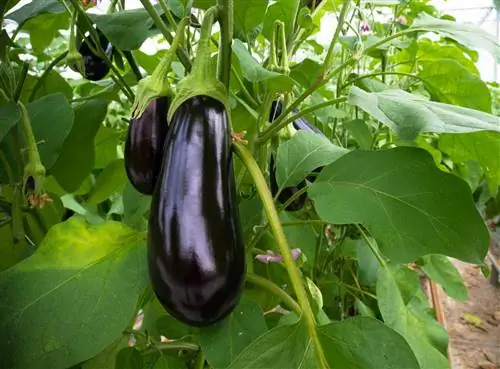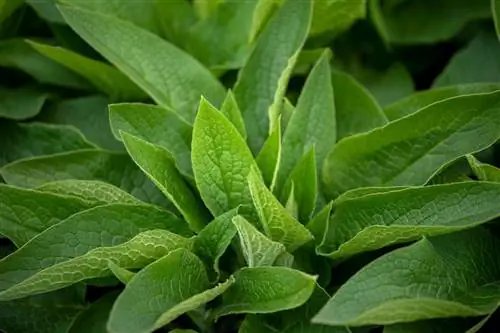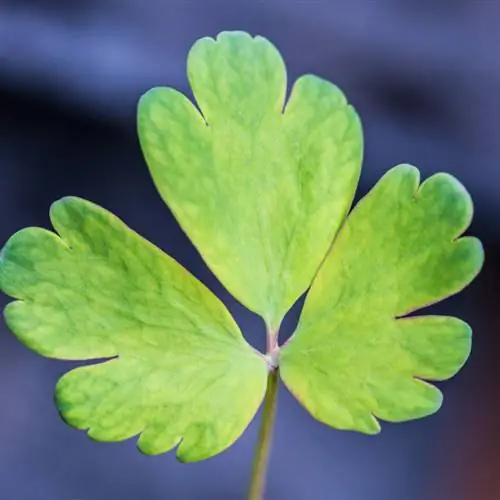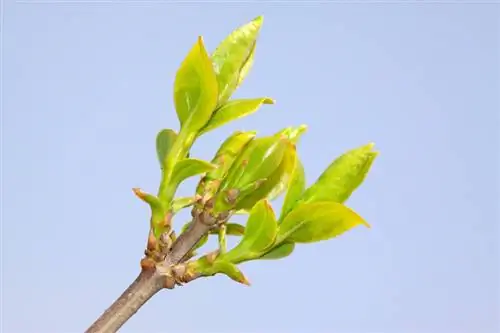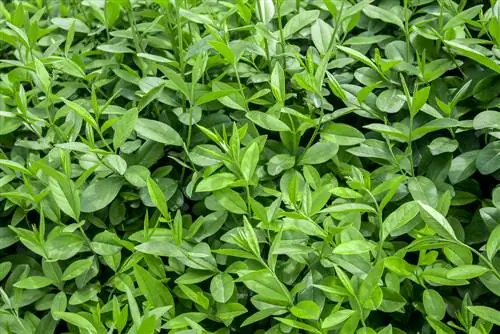- Author admin [email protected].
- Public 2023-12-16 16:46.
- Last modified 2025-01-23 11:22.
Aubergines are a popular Mediterranean vegetable that can often be found in hobby gardens. The nightshade plant, which originally comes from Asia, can also be cultivated here in Europe with the right care. Learn all about the leaves of eggplant plants in this post.
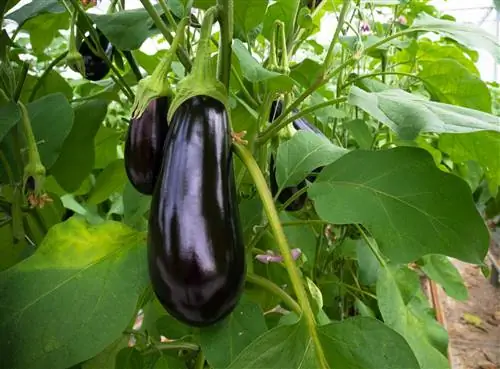
What is special about the leaves of the eggplant?
Eggplant leaves arelarge, oval and softly hairy. As a nightshade plant, the leaves have an effect on the human body, similar to tomato leaves.
What do the leaves of the eggplant look like?
The eggplant grows bushy with branchy branches. Its leaves are about10 to 30 centimeters large and oval-shaped and have velvety soft hairs. If the leaves are he althy, their color is light green to purple-green, depending on the species. They are slightly wavy or lobed.
How do I properly care for the eggplant for he althy leaves?
For a he althy plant, you should pay attention to the following points when caring for your eggplant:
- Place or plant them as warm and protected as possible, 25 degrees Celsius is ideal. A greenhouse is very suitable for eggplants.
- Water them regularly and keep them moist at all times. However, be sure to avoid waterlogging.
- Aubergines are heavy eaters and need a lot of nutrients. Therefore, fertilize them about every two weeks with an organic vegetable fertilizer.
How do I recognize diseases on the eggplant leaves?
You can recognize diseases by these symptoms of the eggplant leaves:
- Rolled and deformed leaves indicate aphids.
- Small bright dots and webs are a sign of spider mites. The leaf-sucking animals ensure these characteristic features.
- Eaten leaves until only the leaf skeleton is left standing can be caused by Colorado potato beetles.
- Yellowing of the leaves can be caused by a fungal disease or indicate a nutrient deficiency. If left untreated, the entire plant will wilt.
Do you have to strip the eggplant and remove the leaves?
Aubergines, like tomatoes, shouldbe pruned regularly. To do this, remove the side shoots in the leaf axes. This means the plant can put all of its energy into supplying and growing the main shoots and the fruits become tastier and larger. Thinning also reduces the foliage of the plant. For example, it can dry out better in the greenhouse. This in turn prevents diseases and pests.
Can you eat eggplant leaves?
The leaves of eggplant should not be eaten as they can bedangerous to the human body. To protect themselves, eggplants produce solanine, which acts as a natural pesticide and is toxic if consumed in large quantities.
Tip
Always water eggplants from below
Aubergines should be watered from below, directly on the trunk. When watering from above, the leaves become wet and may not be able to dry properly again. This makes it easy for diseases and pests.

